There are many reasons why someone may want to refinish a veneer wood table. It could be that the table has been damaged, stained or has lost its original shine. Or perhaps the table is just showing signs of wear and tear due to age. Refinishing a veneer wood table can also drastically change the look of the furniture, allowing for more customization and personalization.
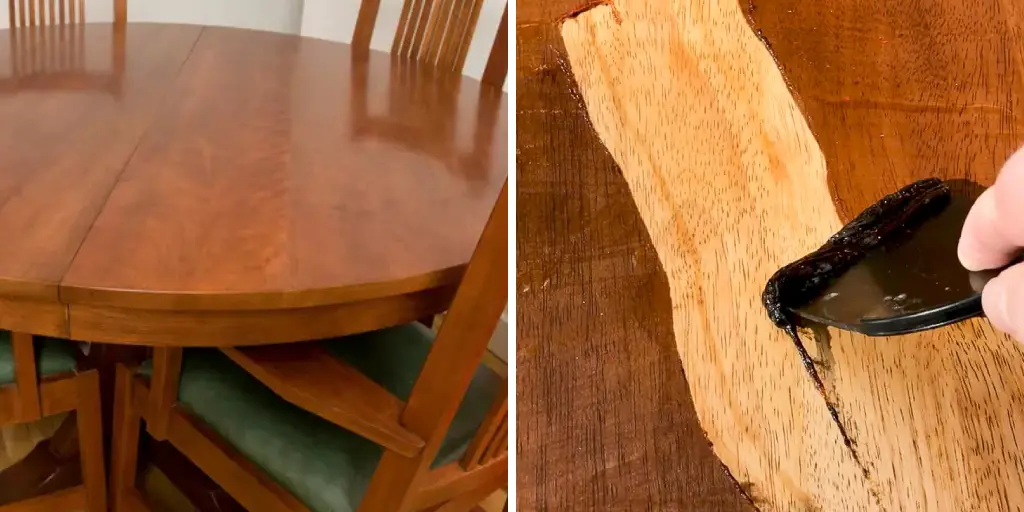
It can bring new life to an old piece and make it feel like brand new. The main advantage of knowing to refinish veneer wood table is that you can easily give an old, worn out piece a whole new look and life. You do not have to spend money on buying new furniture or hiring professionals to do the job for you. Read this blog post to learn how to refinish veneer wood table.
Step-by-step Instructions for How to Refinish Veneer Wood Table
Step 1: Inspect the Table
Before starting any refinishing project, it is important to inspect the table in order to determine its condition. Look for any cracks, scratches or chips on the surface of the veneer wood. To refinish a veneer wood table, you will need some basic materials such as sandpaper, paint stripper, wood stain, and polyurethane. Make sure to also have protective gear such as gloves and a mask.
Step 2: Remove the Old Finish
Using paint stripper, remove the existing finish on the table. This will allow you to get down to the bare wood surface and prepare it for refinishing. Once the old finish has been removed, use sandpaper to smooth out the surface of the table. Start with a coarse grit and then move onto finer grits for a smoother finish.
Step 3: Clean the Table
After sanding, wipe down the table with a damp cloth to remove any dust or debris from the surface. This will ensure that the new finish adheres properly. If you want to change the color of your veneer wood table, now is the time to do so. Apply wood stain according to the manufacturer’s instructions and allow it to dry completely.
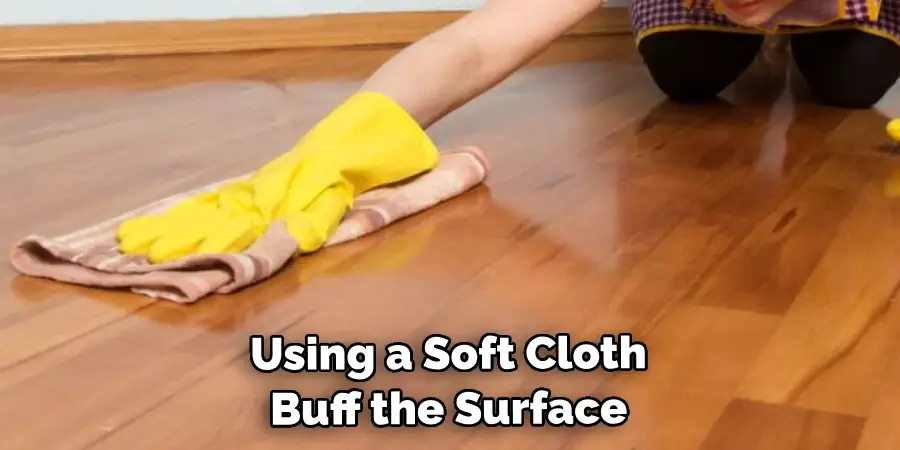
Step 4: Apply Polyurethane
To protect and seal the stained surface, apply a coat of polyurethane using a brush or cloth. Let it dry completely before moving on to the next step. Once the polyurethane has dried, lightly sand the surface with a fine grit sandpaper. This will help to smooth out any imperfections and create a more even finish.
Step 5: Apply Second Coat of Polyurethane
For added protection and a more durable finish, apply a second coat of polyurethane and let it dry completely. Using a soft cloth, buff the surface of the table to give it a smooth, shiny finish. This will also help to remove any excess polyurethane.
Step 6: Reattach Hardware
If your veneer wood table has any hardware such as drawer pulls or hinges, now is the time to reattach them. After all your hard work, it’s time to sit back and admire your newly refinished veneer wood table. It will look like a completely new piece of furniture and be ready for many more years of use.
By following these step-by-step instructions, you can easily refinish a veneer wood table and give it a new lease on life. Remember to always take your time and be patient for the best results.
Safety Tips for How to Refinish Veneer Wood Table

- To protect your skin, eyes and lungs from harsh fumes and chemicals used in refinishing veneer wood tables, make sure to wear safety goggles, gloves and a respirator mask.
- Refinishing veneer wood tables involves the use of strong chemicals that produce harmful fumes. It is important to work in a well-ventilated area, preferably outdoors or in a room with open windows and doors.
- Refinishing veneer wood tables can be a hazardous task, especially for young children and pets. Keep them away from the work area to avoid any accidents or exposure to harmful chemicals.
- Before starting the refinishing process, make sure to cover nearby surfaces and objects with drop cloths or plastic sheets. This will protect them from any spills or splatters of chemicals.
- It is important to read and follow the instructions on the chemical products you are using for refinishing veneer wood tables. Improper use can result in accidents or damage to your furniture.
- Refinishing veneer wood tables involves sanding the surface, which creates fine dust particles. To avoid inhaling them, wear a face mask and clean up any debris regularly.
- While refinishing your veneer wood table, make sure to take breaks and stay hydrated. Working for long periods of time can be exhausting and lead to accidents. Stay alert and focused throughout the process.
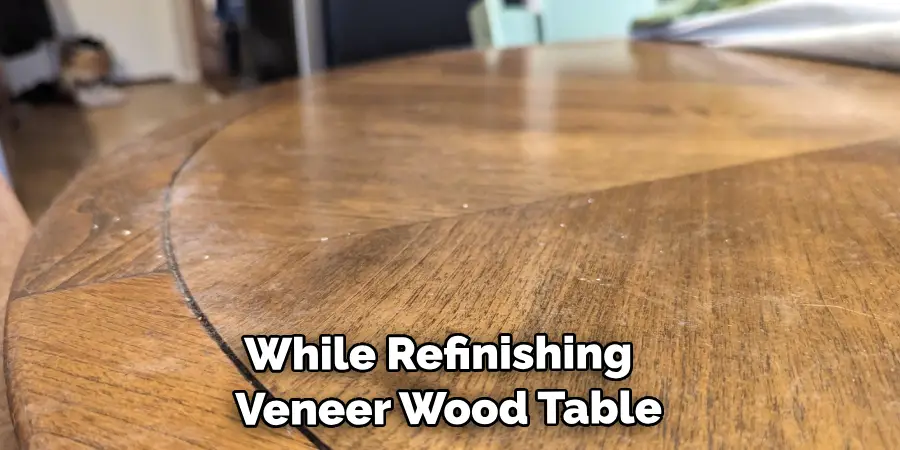
By following these safety tips, you can ensure a safe and successful refinishing process for your veneer wood table. Remember, safety should always be the top priority when working with chemicals and power tools.
What Are Some Common Mistakes to Avoid When Refinishing a Veneer Wood Table?
One of the most common mistakes people make when refinishing a veneer wood table is not properly preparing the surface before applying any stain or finish. This can lead to uneven or blotchy results, with some areas absorbing more product than others. To avoid this mistake, it is important to thoroughly clean and sand the surface of the table before starting the refinishing process. This will help remove any dirt, grime, or previous finish that may be present and create a smooth, even surface for the new stain or finish to adhere to.
Another mistake to avoid is using the wrong type of product. Veneer wood tables are often made from thin layers of real wood bonded together with adhesive. This means they cannot withstand heavy sanding or harsh chemicals, as it can damage the delicate wood layers and cause peeling or bubbling. Be sure to use products specifically designed for veneer wood when refinishing your table. This may include gentle cleaners, light sandpaper or steel wool, and water-based stains or finishes. It is always best to test any product on a small, inconspicuous area before applying it to the whole table.
Are There Any Environmentally Friendly Options for Refinishing a Veneer Wood Table?
When it comes to refinishing a veneer wood table, many people are concerned about the environmental impact of the process. Traditional methods often involve harsh chemicals and can produce a lot of waste. However, there are alternatives that are more environmentally friendly.
One option is to use water-based stains and varnishes instead of oil-based ones. These products have lower levels of volatile organic compounds (VOCs) and are less toxic to both humans and the environment. They also produce less odor, making them more pleasant to work with.
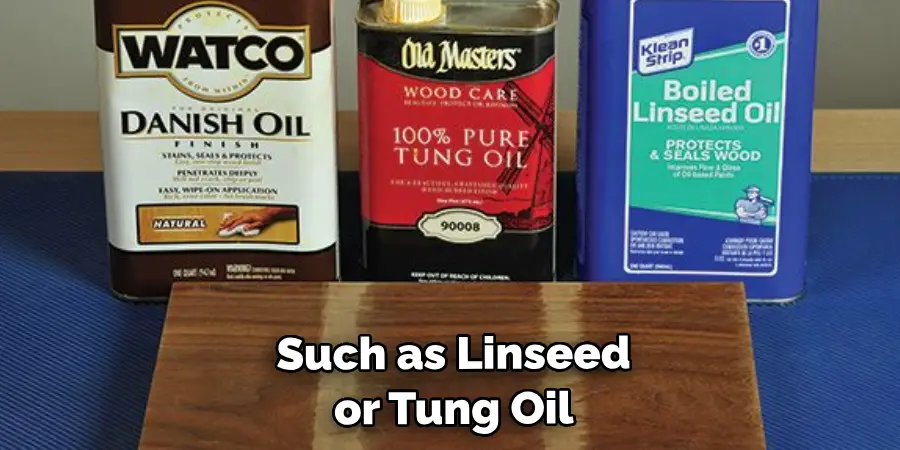
Another eco-friendly option is to use natural oils, such as linseed or tung oil, to finish the table. These oils are derived from plants and have minimal environmental impact. Additionally, they can enhance the natural beauty of the wood without adding any harmful chemicals.
In addition to changing the type of products used, another way to be more environmentally friendly when refinishing a veneer wood table is to minimize waste. This can be achieved by carefully planning and measuring out the amount of product needed for the project. Additionally, using reusable tools such as brushes and cloths instead of disposable ones can also help reduce waste.
What Are Some Signs That Indicate It’s Time to Refinish a Veneer Wood Table?
Refinishing a veneer wood table is no small task, and it’s not something you want to do prematurely. So how do you know when your table is ready for a fresh coat of finish? Here are some signs to look out for:
- Scratches and dents: If your table has visible scratches and dents that can’t be removed with just a light sanding, it’s a good indication that the finish has worn off and it’s time for a refinishing.
- Faded color: Over time, exposure to sunlight can cause the color of your veneer wood table to fade. If you notice a significant change in color, it may be time for a refinish.
- Water damage: If your veneer wood table has water stains or other signs of water damage, it’s important to act quickly and refinish the table before the damage becomes irreversible.
- Rough texture: When you run your hand over the surface of your table, do you feel a rough or uneven texture? This could mean that the finish has worn off and needs to be replaced.
- Peeling or chipping: If the finish on your table is peeling or chipping, it’s a clear sign that it’s time for a refinish. Not only does this make the table look unsightly, but it also leaves the wood underneath vulnerable to damage.
- Stains and discoloration: Even with regular cleaning and maintenance, stains and discoloration can still occur on a veneer wood table. If they can’t be removed with simple cleaning methods, it’s likely time for a refinish.
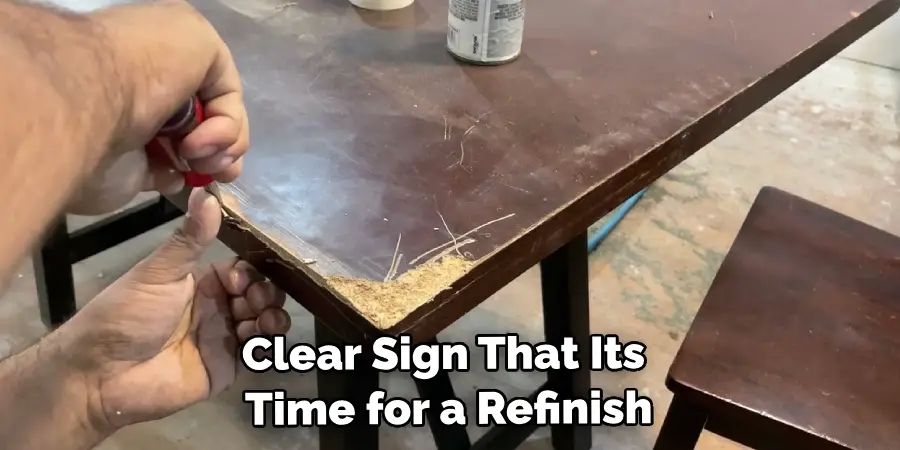
By keeping an eye out for these signs and regularly maintaining your veneer wood table, you can help ensure that it stays looking beautiful for years to come. Refinishing may seem like a daunting task, but with the right knowledge and techniques, you can easily bring new life to your table and make it a stunning centerpiece in your home.
Conclusion
In conclusion, refinishing veneer wood tables is a task that can be easily accomplished with the right tools and techniques. It may seem daunting at first, but with some patience and attention to detail, you can transform your old, worn out table into a beautiful piece of furniture once again. Remember to always prepare your work area properly, gather all necessary supplies, and take the time to sand and clean the table before applying any finish.
It’s also important to choose the right type of finish for your specific table, whether it be oil-based or water-based. Following these steps and tips, you can achieve a professional-looking finish that will not only restore your table but also protect it for years to come. Don’t be afraid to experiment and try new techniques, as refinishing furniture can be a fun and rewarding DIY project. I hope this article has been beneficial for learning how to refinish veneer wood table. Make Sure the precautionary measures are followed chronologically.
